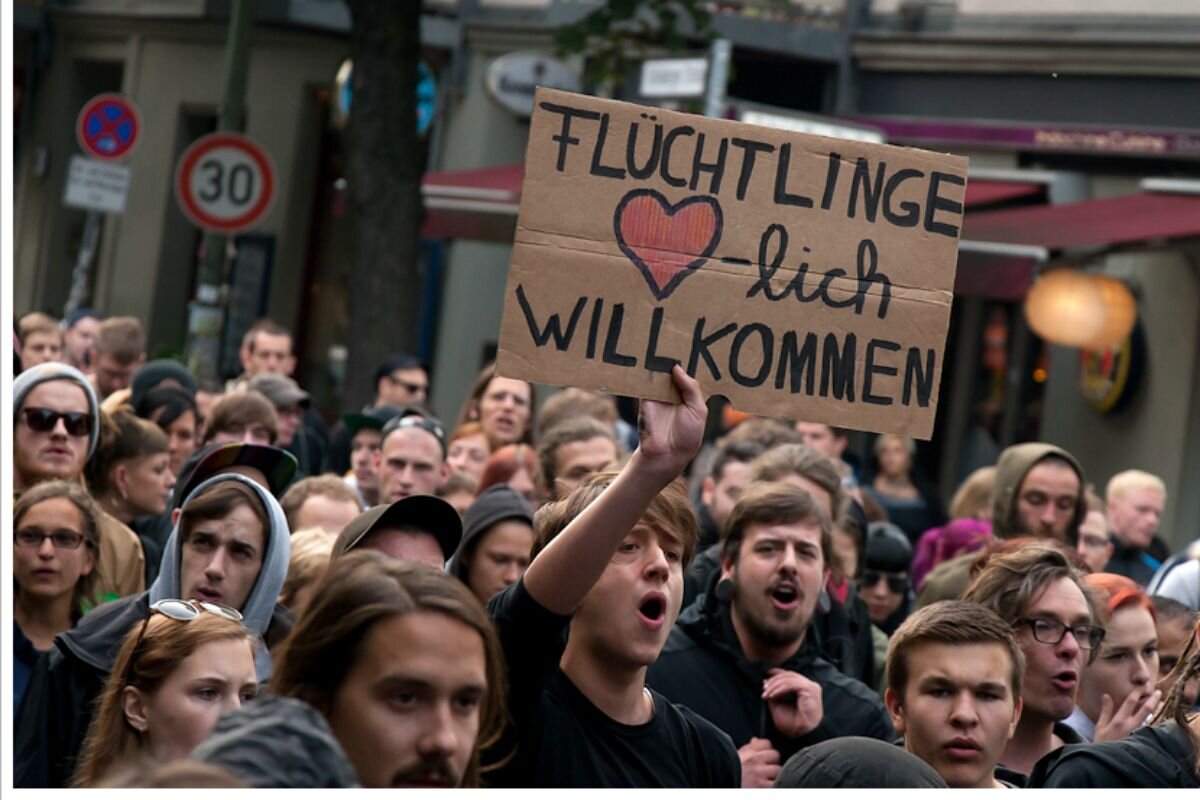The EU Pact: A critical topic for border criminology and crimmigration scholars
Posted
Time to read
Guest post by José A. Brandariz. José A. Brandariz is a professor of criminal law and criminology at ECRIM, University of A Coruna, Spain, a former member of the Executive Board of the European Society of Criminology and a former associate editor of the European Journal of Criminology. He is the current co-editor of the book series Routledge Studies in Criminal Justice, Borders and Citizenship. This post is part of a thematic series on the EU Pact on Migration and Asylum, edited by Giuseppe Campesi and José Angel Brandariz. Read the introduction here.
Nearly 25 years ago, Leanne Weber published a groundbreaking article outlining why criminologists should pay close attention to migration detention As Giuseppe Campesi pointed out to me one year ago, there are as many reasons for border criminology and crimmigration scholars to thoroughly examine the EU Pact on Migration and Asylum.
The significance of the EU Pact cannot be overstated. After more than eight years of migration management turmoil and intense political negotiations, EU institutions have managed to pass a widest ranging mobility policy package that will alter the migration and asylum landscape in Europe for years to come. This is not a minor milestone. The scope of this change is arguably unprecedented in the field of EU migration and asylum law, going far beyond the scale of previous legal reforms enacted in e.g. the early 2000s and from 2011 to 2013. Consequently, the EU Pact will have a vital impact on issues such as deportation and pushbacks practices, forms of migration detention and containment, the policing and digital surveillance of noncitizens and racialized groups, and more generally bordering practices across Europe, which are critical topics for border criminology and crimmigration scholars.
Migration law, criminology and the EU Pact
Certainly, migration law scholars have already been carefully scrutinising the successive versions of the EU Pact and its legislative acts, including the wide range of legal reforms passed in mid-May 2024. In so doing, they have made a pivotal contribution to grasp the magnitude and effects of this high-profile policy reform. At least to a certain extent, the methodologies and purposes of legal studies allow them to develop the foresight capacities we have witnessed in this case. These studies primarily focus on interpreting legal provisions. As a result, they can predict potential consequences even before legislative acts come into force, and sometimes while they are still in draft form. Legal analyses thereby provide particularly valuable insights on regulations, setting them against normative principles, tenets and goals.
For better or for worse, socio-legal and criminology studies have different aspirations and a different pace. They thrive when empirical data are (already) available. Unlike legal studies, socio-legal and criminology research focuses on how regulations are enforced and how they shape broader policy frameworks. As a result, such studies usually emerge later, once legal provisions are already being implemented.
Border criminology and crimmigration perspectives on the EU Pact
Maybe because of these differences, criminological explorations are as needed as legal studies to scrutinise the EU Pact. They may cast light on dimensions that are invisible to legal analyses, giving this policy reform a context that goes beyond legal precepts and normative expectations.
Specifically, the criminological gaze is necessary because the well-known law-in-the-book vs law-in-practice gap is rarely wider than in the case of border regimes and immigration enforcement. The border criminology and crimmigration lens may allow scholars and activists to look beyond the harmonising EU law provisions, conducting situated explorations aimed at mapping the repercussions of recent changes at the national and local level. In an effort to avoid ethnocentrism pitfalls, it may examine the consequences of the multi-scalar nature of European border regimes, in the framework of which similar – if not identical – regulations result in a marked diversity of state control practices. Border criminology and crimmigration viewpoints may also contribute to unveil the racialized and postcolonial texture of the new bordering arrangements.
They may crucially assist as well in showing the chameleon-like nature and the many contradictions characterising the EU Pact, whose illiberal regulations are praised by the few remaining liberal European leaders whilst they are decried by conservative and far-right national administrations. In fact, the EU Pact bears the scars of the years-long agonistic debates leading to its passage, which are patent in its effort to meet different aspirations and agendas. It intends to curb the re-bordering measures put in place by various central and northern European countries at EU internal borders by decisively reinforcing external borders. It aims to entice conservative and nationalist administrations with a hard-line approach, combining it with the managerial goals of effectiveness and expeditiousness (see e.g. the new Screening Regulation) and the (alleged) humanitarian tones of resettlement policies. It strengthens the logic of containment while simultaneously calling for a decisive reinforcement of deportation capacities. It unambiguously addresses secondary migration concerns whilst apparently giving priority to irregular sea arrivals and irregular border-crossing activities through the regulation of border procedures.
The unstable combination of varied, contested agendas, as well as the extremely diverse mobility and political landscape upon which it will be imposed, prevent any one-dimensional view on the EU Pact and caution against taking the consequences of this policy change for granted. As soon as the implementation plans at the national level begin to be carried out and the legal provisions begin to be enforced, the border criminology and crimmigration lens may assist in unveiling overlooked aspects and unanticipated implications. One of these aspects has to do with the potentially promising changes brought about by the Pact. The academic and activist literature has overwhelmingly assessed the Pact in negative terms – arguably, for good reasons. Positive aspects are harder to come by in the literature, with some exceptions - e.g. the new oversight scheme created by the Screening Regulation (see Nikolopoulos’ contribution in this series). The socio-legal perspective of the border criminology and crimmigration scholarship can help elucidate whether the EU Pact may turn out to have promising aspects that have been neglected in initial evaluations. It may also cast light on potential avenues for resistance and on whether and how the new punitive arrangements can potentially lead to a policy backlash that may buffer its most harmful effects – like it was the case with the Italian externalisation plans recently and arguably with the Return Directive years ago. Border criminology and crimmigration studies must reckon with the especially agonistic character of migration control policies.

EU Pact snapshots
This series has aimed to contribute to this type of exploration on the new legal and policy framework, examining its implications in different domains and regions. The series presented the main features of the EU Pact, specifically scrutinising the new bordering practices to be enforced at external borders, namely the screening and border procedures; the proliferation of borders inside Schengenland; the emergency regimes authorising the erosion of asylum rights; changes in the field of detention; the deterrent reform of asylum regulations; and the expansion of digital borders.
Building on this overview, the series presents in-depth analyses of the EU Pact’s repercussions in specific jurisdictions. Eastern EU borders are expected to be the testing ground of the new emergency powers granted in cases of so-called instrumentalisation of migration for political purposes by non-EU countries, against the backdrop of the increasing tensions with Russia and Belarus. Jukka Könönen explores how the Finnish administration has been leveraging this geopolitical conflict to tighten immigration policies. In addition, he scrutinises how new arrangements are being developed to ‘instrumentalise’ the instrumentalisation framework in order to severely curtail asylum rights. Monika Szulecka and Witold Klaus, in turn, show that the new emergency regime can be seen as a development of violent bordering practices that have been taking place at eastern Polish borders in recent years. In this region, the militarisation of the border and the massive enforcement of pushback measures have resulted in the virtual obliteration of asylum rights.
In addition to land borders—often referred to as ‘green borders’—the Pact is expected to have a significant impact on maritime frontiers. In this regard, Gustavo de la Orden reflects upon the potential repercussions of the EU Pact in Spain, focusing on the innovative border control arrangements put in place in the Canary Islands, an ultra-peripheral external border region. In this respect, he wonders whether the pre-entry screening and border procedures may be in line with forms of containment tested in the Canaries in recent years. In the same vein, George Nikolopoulos ponders how the EU Pact may alter the immigration enforcement scenario in Greece, which is known to be particularly expansive and punitive. Giulia Fabini and Valeria Ferraris, in turn, put the spotlight on a critical jurisdiction such as Italy, which has long been ground zero of EU bordering practices, recently leading innovations in externalisation policies. The EU Pact appears to sanction immigration enforcement policies already tested in Italy in recent years, without significantly expanding the deterrence and deportation capacities of the Italian system.
External borders are far from being the only border area impacted by the new legal and policy arrangements. Maartje van der Woude’s contribution reminds us that the EU Pact will also have significant implications upon the re-bordering practices carried out at internal Schengen borders. This dimension of the Pact is particularly ambiguous and murky, since it is not clear – as van der Woude insightfully stresses – whether the reform of the Schengen Borders Code will undermine member states’ capacities to police internal borders or - conversely – it will further erode freedom of movement rights inside Schengenland.
Digital, ‘cloudy’ borders have long been a critical part of border regimes and the EU Pact is no exception to this rule. In this respect, Valeria Ferraris dissects the implications of the recast Eurodac Regulation, which has expanded Eurodac’s scope well beyond the field of asylum, turning it into a multifunctional database. The new legal regime decisively strengthens Eurodac’s capacity to identify migrants and asylum seekers and to track secondary movements. In addition, Eleonora Celoria examines how the passage of the Screening Regulation paves the way for the development of new forms of digital bordering, further consolidating the interoperability of databases. The novel regulation further cements the securitisation of migration, presenting irregular mobility as a critical security risk.
Together, these contributions offer a comprehensive overview of the complex, multi-dimensional changes introduced by the EU Pact. They also make up a call for border criminology and crimmigration scholars to actively take part in this conversation, for EU Pact provisions and policies will decisively alter the immigration enforcement landscape, both at the national and supranational level, in the EU and elsewhere.
How to cite this blog post (Harvard style):
J. Brandariz. (2025) The EU Pact: A critical topic for border criminology and crimmigration scholars. Available at:https://blogs.law.ox.ac.uk/border-criminologies-blog/blog-post/2025/03/eu-pact-critical-topic-border-criminology-and. Accessed on: 29/03/2025Share
YOU MAY ALSO BE INTERESTED IN
With the support of











